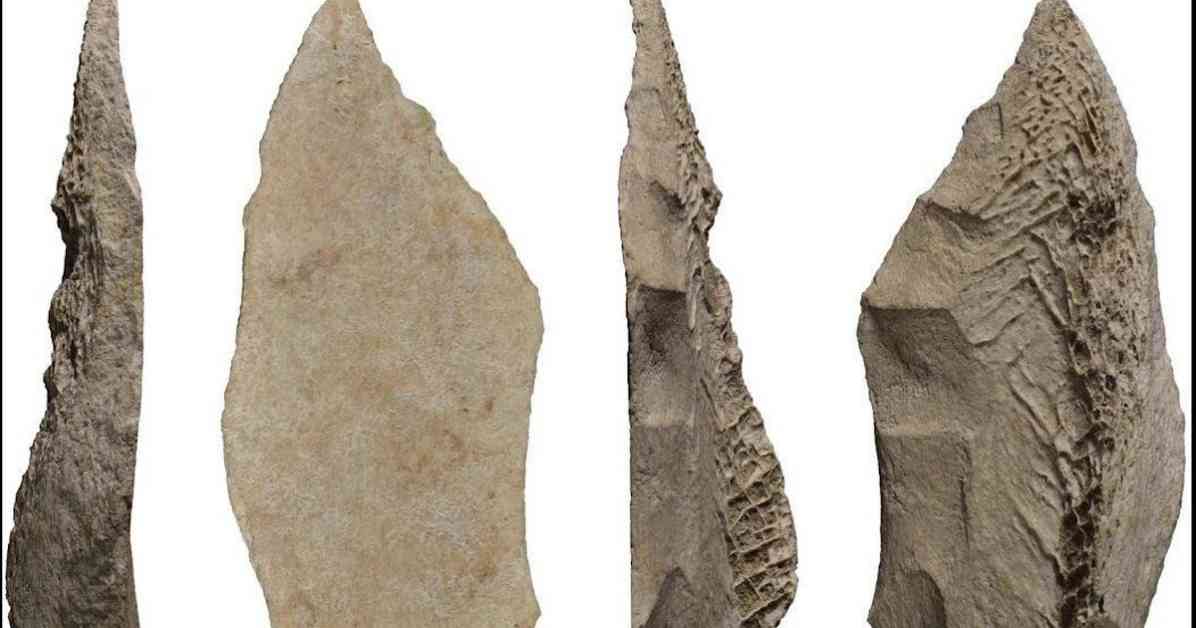Neanderthals Used Bone to Craft ‘Flexible’ Spear Points
The debate surrounding the similarities between Neanderthals and modern humans continues to intrigue scientists, with new discoveries shedding light on the capabilities of our ancient relatives. One such discovery comes from Spain, where archaeologists have unearthed the first-ever spear point made of horse bone by Neanderthals.
The find, located at the Abric Romaní rock shelter in Spain, dates back approximately 50,000 years. This spear point, crafted from horse bone, was shaped, sharpened, and affixed to a shaft, showcasing the resourcefulness and adaptability of Neanderthals. The study, published in Scientific Reports in August, was led by Paula Mateo-Lomba of the Catalan Institute of Human Paleoecology and Social Evolution.
Exploring Neanderthal Tool-Usage
Neanderthals are known for their adeptness at crafting tools, particularly those made from stone. However, this recent discovery challenges the notion that Neanderthals exclusively utilized lithic materials for their weaponry. The presence of a bone spear point suggests a level of innovation and flexibility in material selection among Neanderthals, highlighting their ability to adapt to the resources available in their environment.
According to Mateo-Lomba, the Neanderthals at Abric Romaní had access to an abundance of lithic raw materials, making the choice to use bone for tool-making a deliberate decision. This finding underscores the complexity of Neanderthal technology and the diverse range of materials they employed in their daily lives.
Implications for Human Evolution
The discovery of a bone spear point among Neanderthals raises intriguing questions about the evolution of tool-making in early hominins. While stone tools have long been associated with human ancestors, the use of bone as a primary material for weaponry offers new insights into the technological capabilities of Neanderthals.
The presence of bone tools in the archaeological record suggests that early hominins were adept at utilizing a variety of materials for different purposes. From scraping hide to crafting specialized tools, the use of bone highlights the ingenuity and resourcefulness of our ancient relatives.
Uncovering Neanderthal Adaptations
The bone spear point found at Abric Romaní provides a glimpse into the hunting practices of Neanderthals, offering clues about their strategies for survival. The hafting techniques employed by Neanderthals, including the use of sturdy glues to attach spear points to shafts, demonstrate their advanced understanding of tool construction and hunting methods.
While some experts question the practicality of using bone for spear points when lithic materials were readily available, the discovery challenges assumptions about Neanderthal tool-making practices. The presence of bone tools among Neanderthals suggests a level of adaptability and creativity that may have been underestimated in previous studies.
In conclusion, the discovery of a bone spear point among Neanderthals at Abric Romaní opens up new avenues for research into the technological capabilities of our ancient relatives. By expanding our understanding of Neanderthal tool-usage and hunting practices, we gain valuable insights into the evolution of human technology and innovation. As we continue to unravel the mysteries of our evolutionary past, discoveries like these remind us of the remarkable ingenuity and adaptability of our early hominin ancestors.



































































